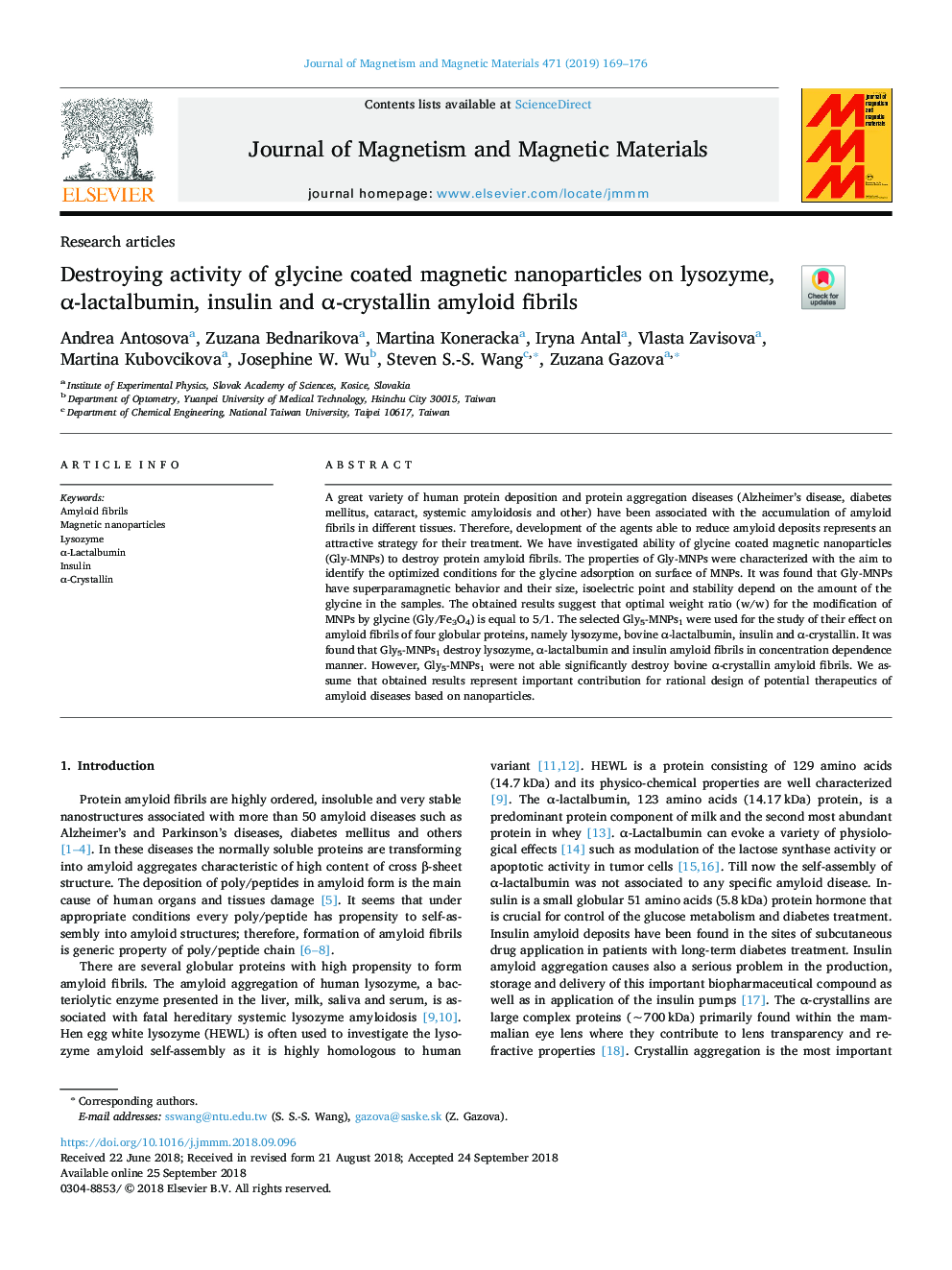| Article ID | Journal | Published Year | Pages | File Type |
|---|---|---|---|---|
| 10710365 | Journal of Magnetism and Magnetic Materials | 2019 | 8 Pages |
Abstract
A great variety of human protein deposition and protein aggregation diseases (Alzheimer's disease, diabetes mellitus, cataract, systemic amyloidosis and other) have been associated with the accumulation of amyloid fibrils in different tissues. Therefore, development of the agents able to reduce amyloid deposits represents an attractive strategy for their treatment. We have investigated ability of glycine coated magnetic nanoparticles (Gly-MNPs) to destroy protein amyloid fibrils. The properties of Gly-MNPs were characterized with the aim to identify the optimized conditions for the glycine adsorption on surface of MNPs. It was found that Gly-MNPs have superparamagnetic behavior and their size, isoelectric point and stability depend on the amount of the glycine in the samples. The obtained results suggest that optimal weight ratio (w/w) for the modification of MNPs by glycine (Gly/Fe3O4) is equal to 5/1. The selected Gly5-MNPs1 were used for the study of their effect on amyloid fibrils of four globular proteins, namely lysozyme, bovine α-lactalbumin, insulin and α-crystallin. It was found that Gly5-MNPs1 destroy lysozyme, α-lactalbumin and insulin amyloid fibrils in concentration dependence manner. However, Gly5-MNPs1 were not able significantly destroy bovine α-crystallin amyloid fibrils. We assume that obtained results represent important contribution for rational design of potential therapeutics of amyloid diseases based on nanoparticles.
Related Topics
Physical Sciences and Engineering
Physics and Astronomy
Condensed Matter Physics
Authors
Andrea Antosova, Zuzana Bednarikova, Martina Koneracka, Iryna Antal, Vlasta Zavisova, Martina Kubovcikova, Josephine W. Wu, Steven S.-S. Wang, Zuzana Gazova,
